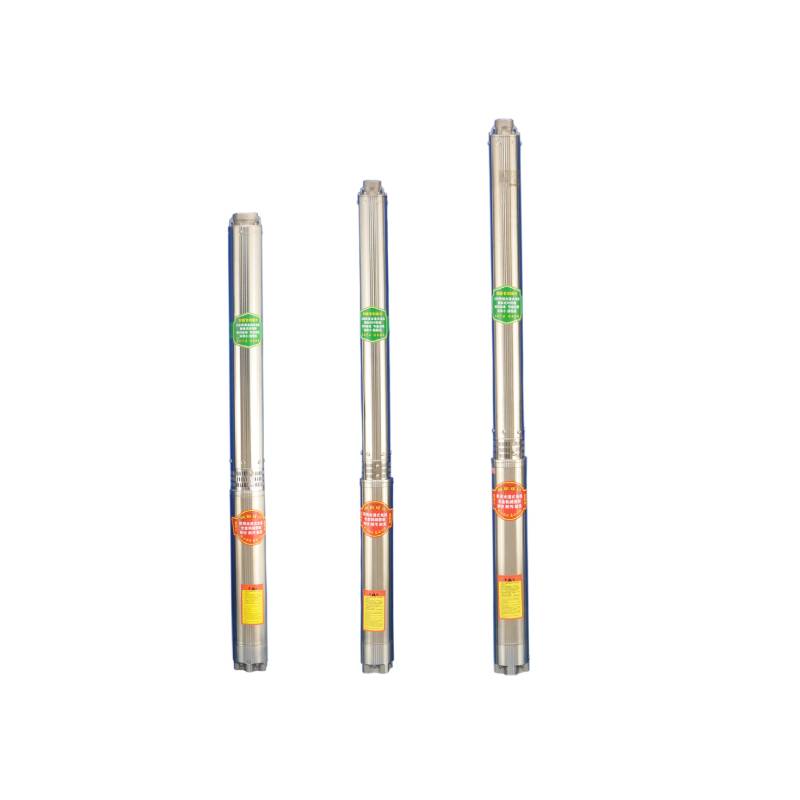Nov . 22, 2024 14:17 Back to list
submersible sewage pump
The Essential Guide to Submersible Sewage Pumps
Submersible sewage pumps play a crucial role in modern wastewater management systems, handling the effective disposal of wastewater from residential, commercial, and industrial settings. Unlike traditional pumps, these units are designed to operate underwater, making them ideal for environments where sewage and other effluents need to be transported away from their sources.
Understanding Submersible Sewage Pumps
A submersible sewage pump is a type of pump that is fully submerged in the fluid it is designed to pump. These pumps are equipped with a hermetically sealed motor, which prevents water from entering and causing any damage. Lifting and moving waste is achieved by the pump’s impeller, which generates the necessary pressure to push sewage through discharge pipes.
Key Advantages of Submersible Sewage Pumps
1. Efficient Operation One significant advantage of submersible sewage pumps is their efficiency. The design allows them to operate at increased depths without losing suction capability, which helps in reducing energy consumption and operational costs.
2. Space-saving Design As submersible pumps are installed below the water surface, they require less surface area than traditional pumps. This space-saving feature makes them perfect for installations in confined areas, such as basements and pits.
3. Reduced Noise Levels These pumps operate quietly, as they are submerged underwater. This quality is particularly important for residential settings where noise reduction is a priority.
4. Automatic Functionality Many submersible sewage pumps come equipped with float switches that enable automatic operation. When water rises to a certain level, the pump activates automatically to remove excess water, ensuring efficient management of sewage water.
submersible sewage pump

Applications of Submersible Sewage Pumps
Submersible sewage pumps are versatile and can be used in various settings, including
- Residential Homes that rely on septic systems or have basements often require submersible pumps to manage sewage effectively. This includes areas prone to flooding where excess water must be drained quickly.
- Commercial Restaurants, hotels, and shopping malls produce considerable amounts of wastewater. Submersible sewage pumps are essential for transporting this waste to municipal sewage systems.
- Industrial Factories and processing plants often deal with large volumes of wastewater, which can contain solids and debris. Submersible pumps are designed to handle such challenging conditions safely.
Maintenance and Care
To ensure the longevity and efficiency of submersible sewage pumps, regular maintenance is essential. Periodic inspections should include checking the pump for blockages, inspecting electrical connections, and ensuring the float mechanism operates smoothly. It’s also crucial to clean the pump regularly to prevent clogs, particularly in environments dealing with solid waste.
Conclusion
Submersible sewage pumps are an indispensable component of effective wastewater management. Their efficient design, versatile applications, and reduced operational noise make them suitable for various environments, from residential homes to large industrial complexes. By understanding their functionality and implementing proper maintenance routines, users can ensure that these pumps remain operational for years to come, safeguarding both health and the environment. Investing in a quality submersible sewage pump not only streamlines waste management but also contributes to a cleaner and more sustainable future.
-
Submersible Water Pump: The Efficient 'Power Pioneer' of the Underwater World
NewsJul.01,2025
-
Submersible Pond Pump: The Hidden Guardian of Water Landscape Ecology
NewsJul.01,2025
-
Stainless Well Pump: A Reliable and Durable Pumping Main Force
NewsJul.01,2025
-
Stainless Steel Submersible Pump: An Efficient and Versatile Tool for Underwater Operations
NewsJul.01,2025
-
Deep Well Submersible Pump: An Efficient 'Sucker' of Groundwater Sources
NewsJul.01,2025
-
Deep Water Well Pump: An Efficient 'Sucker' of Groundwater Sources
NewsJul.01,2025
-
 Submersible Water Pump: The Efficient 'Power Pioneer' of the Underwater WorldIn the field of hydraulic equipment, the Submersible Water Pump has become the core equipment for underwater operations and water resource transportation due to its unique design and excellent performance.Detail
Submersible Water Pump: The Efficient 'Power Pioneer' of the Underwater WorldIn the field of hydraulic equipment, the Submersible Water Pump has become the core equipment for underwater operations and water resource transportation due to its unique design and excellent performance.Detail -
 Submersible Pond Pump: The Hidden Guardian of Water Landscape EcologyIn courtyard landscapes, ecological ponds, and even small-scale water conservancy projects, there is a silent yet indispensable equipment - the Submersible Pond Pump.Detail
Submersible Pond Pump: The Hidden Guardian of Water Landscape EcologyIn courtyard landscapes, ecological ponds, and even small-scale water conservancy projects, there is a silent yet indispensable equipment - the Submersible Pond Pump.Detail -
 Stainless Well Pump: A Reliable and Durable Pumping Main ForceIn the field of water resource transportation, Stainless Well Pump has become the core equipment for various pumping scenarios with its excellent performance and reliable quality.Detail
Stainless Well Pump: A Reliable and Durable Pumping Main ForceIn the field of water resource transportation, Stainless Well Pump has become the core equipment for various pumping scenarios with its excellent performance and reliable quality.Detail
